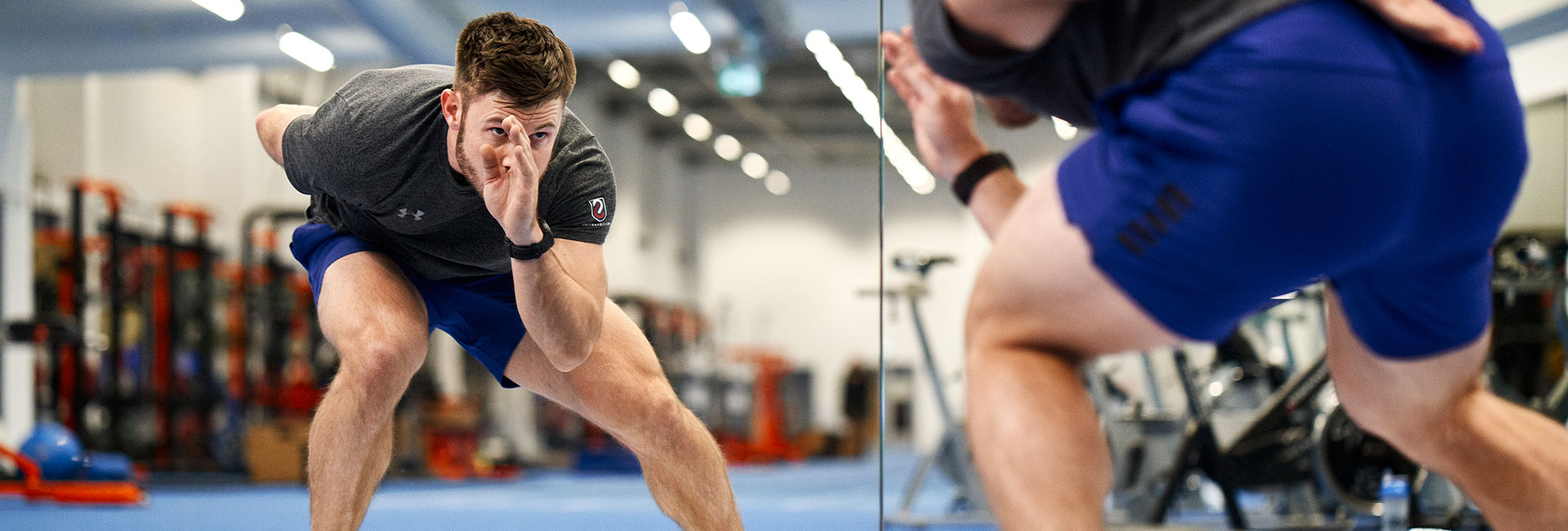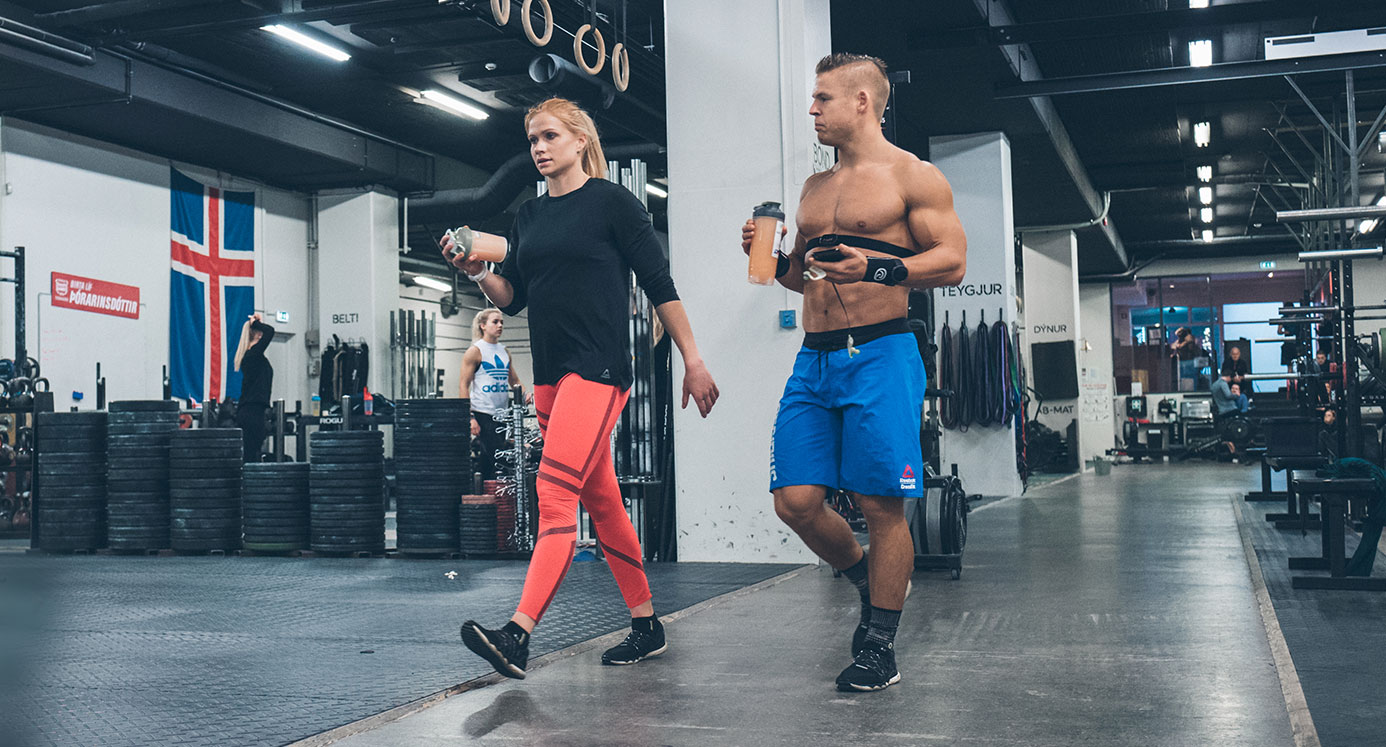If your goal is to get stronger and you practically live at the gym, but you’re not seeing the results you want, this one’s for you.
It doesn’t matter who you are, a fitness journey is never linear. Some months you might be hitting your numbers and setting new PRs, while other months you might find yourself not quite where you want to be, despite not making any changes to your diet or training regimen. Putting in the work and not seeing the strength gains you’re expecting can be a frustrating experience.
Nobody knows this better than Logan Gelbrich. He’s a Level 3 Certified CrossFit Trainer and owner of DEUCE Gym in Venice Beach, California, who has helped thousands of athletes on their journey to be not only stronger, but more well-rounded as athletes.
Gelbrich has identified five reasons why strength training may not be producing the results an athlete is looking for.
1) You aren’t actually training
The first reason why you’re not getting stronger is stimulus. There’s a big difference between training and actually training.
You might have the correct form, but simply going through the motions isn’t the same as training with intent. You have to properly stress the system to manifest strength gains.
“It’s quite common to perform choreography of training rather than actual adaptation inducing training, and this impersonation of strength training can be justified in the name of safety and ‘form,’” says Gelbrich.
“Strength building training must be stressful enough and, therefore, heavy enough to do its job. This can be accomplished while maintaining postures and positions that are safe, but lifting weights that are too light and/or for the wrong amount of training volume dosage will never illicit strength gains.”
2) You’re stuck repeating the same old
Second is how well the body can handle the training load. This will change due to a variety of factors, but strength exercises that are effective now might not be as effective later. Gelbrich calls this ‘accommodation’.
“What worked in the beginning will not continue to work in the middle or at the end of one’s strength journey — the stimulus required to drive strength adaptation is a moving target,” says Gelbrich.
“Every strength program that is worth its salt will provide some kind of solution to the natural phenomenon known as accommodation. Common strategies for linear strength programs is the usage of de-load periods to maintain training intensities. Training variance is another tool to drive adaptation without succumbing to the stagnating effects of accommodation.”
3) You’ve set unrealistic goals
Both stimulus and accommodation are undoubtedly central to getting stronger, but as with any sport or fitness goal, the mental approach can be just as important as the physical training.
Setting realistic expectations goes a long way, and this is especially true when it comes to failure and the effects of failure. Goals need to be kept in perspective, as should the training plan developed to reach said goals.
“Plenty of good can come from chasing a lofty goal and coming up slightly short, but what’s likely more important than realistic expectations is an accurate training plan,” Gelbrich emphasizes.
“Unrealistic expectations are likely most detrimental to the efficacy of the training prescription. If the prescription of exercises, loads and volumes of training are based on an unrealistic expectation, the training likely would be inappropriate to drive adaptation.”
4) You’re mentally draining yourself
Let’s say you’re in the dog days of your training regimen and you’re seeing results, but you’re not as driven or motivated as you once were. How can you keep strength training engaging, and therefore keep getting stronger?
Simply put, mix things up to keep a fresh perspective, and don’t get bogged down about hitting (or not hitting) specific numbers.
“Training variance allows the athlete to maintain high training volumes without some of the downsides of creating expectations or pressure surrounding the day’s effort,” Gelbrich says.
“Having an emotional attachment to the training numbers can be a mental drain. The Westside method, for example, takes advantage of high training intensity without the psychological drag of assigning meaning to hitting numbers each week and the physical fall out of missing lifts.”
5) You’re not being honest with yourself
Ultimately, when it comes to the question of “Why am I not getting stronger?”, looking within to find the source of your motivation can be a helpful tool.
Are you truly putting in the work (or too much work)? Are you not focusing on your weaknesses because it’s easier to work on what you’re already good at? At the end of the day, being both cognizant and honest with yourself is key.
“There’s a middle road to treating the training plan as gospel and only training what feels good. On one hand, athletes can’t afford to only train what their preferences are. On the other hand, many athletes dodge the relative burden of the training necessary to drive strength adaptation,” says Gelbrich.
“An athlete’s strength journey is best realized with an inquiry into him-/herself. Excellent self-awareness is a key tool in navigating common pitfalls like poor compliance and over-training.”
If you feel, it’s time to add some variety to your strength training:
Try our 4-week fitness program and train with the ‘Fittest on Earth’.
If you liked this post, don’t forget to share so that others can find it, too.
Or give it a thumbs up!
I like this article
Please note that the information provided in the Polar Blog articles cannot replace individual advice from health professionals. Please consult your physician before starting a new fitness program.





